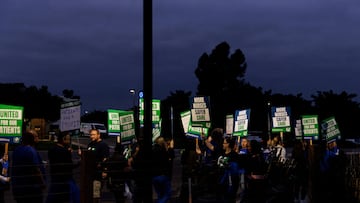WORK
The reasons why a large health care strike could happen soon in the US
75,000 workers could be set to join a large strike in five states after an agreement deadline was missed with their employer.

Eight unions have said they have not reached an agreement with healthcare company Kaiser Permanente which could result in the largest strike ever in the sector.
75,000 workers are set to walk out on Wednesday; doctors, hospital managers, and registered nurses will not be taking part.
Workers are demanding wage increases, protection from outsourcing and a resolution to a staffing shortage.
“Healthcare workers want to be in facilities with the patients they care about,” said Renee Saldana of Service Employees International Union-United Healthcare Workers West (SEIU-UHW).
SEIU-UHW is the largest union involved with 58,000 workers. “Given the urgency of this staffing crisis, frontline healthcare workers are ready to sit down with Kaiser executives whenever they are ready to bargain in good faith over lasting solutions so patients can be safe and get the care they deserve.”
Kaiser Permanente is a large integrated healthcare company. It is both a healthcare provider and an insurance company, often referred to as a “managed care organization” or “health maintenance organization” (HMO). In the second quarter of this year they posted $2.1 billion in profit.
A summer of labour action continues
2023 has been dominated by workers fighting back against exploitation. Though seemingly coming to an end, the writer and actor’s strike in Hollywood has rumbled on for months while 146,000 auto workers are also on strike.
Despite the extra news coverage on labor issues in recent months, the reality is that trade unions are much weaker today compared to the last century.
At their peak in the 1950s, around 35% of non-agricultural workers were union members. This began to decline from the 1970s, which saw 70% more strikes compared to today while last year, 10.1% of US workers were unionised.






